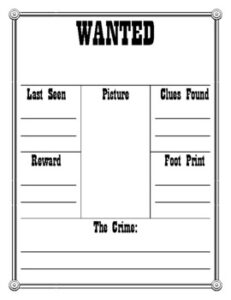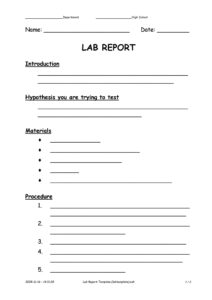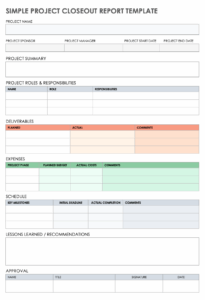Have you ever wondered what goes into a police report? Maybe you’re working on a school project, exploring a career in law enforcement, or simply curious about how incidents are documented. Understanding the structure and content of a police report isn’t just for professionals; it’s a valuable skill that can help you grasp important civic concepts and even boost your critical thinking.
Police reports are crucial documents that record incidents, crimes, and accidents. They serve many purposes, from initiating investigations to providing evidence in court. For students, learning about these reports can demystify a part of the justice system and show how details, accuracy, and clear communication are absolutely vital in real-world scenarios.

While you might not be writing an official report for the police department, creating and using a police report template for students can be an excellent educational tool. It allows you to practice gathering information, organizing facts, and articulating events clearly and concisely, much like an actual officer would do. It’s an engaging way to understand the serious work behind maintaining public safety and order.
Understanding the Purpose and Structure of a Police Report
A police report is more than just a piece of paper; it’s a detailed record of an event as observed and investigated by law enforcement. It serves as the official narrative, capturing essential information that can be used for follow-up investigations, court proceedings, insurance claims, and statistical analysis. For a student, grasping the depth and importance of such a document can provide a deeper appreciation for the processes involved in upholding justice and resolving conflicts in society.
When an officer responds to a call, they are tasked with collecting all relevant facts, identifying parties involved, and documenting the scene. This information is then meticulously organized into a report. The clarity and accuracy of this report are paramount because it often forms the foundation for legal actions and decisions. Imagine trying to explain an incident years later without a detailed, objective record – it would be incredibly challenging!
Key Sections of a Standard Police Report
Every police report, regardless of the incident type, typically follows a structured format to ensure all necessary information is captured consistently. This structure helps ensure nothing important is overlooked and makes it easier for anyone reading the report to quickly understand the core facts.
Here are the common sections you’d find:
- Incident Details: This includes the type of incident (e.g., theft, assault, accident), the date and time it occurred, and the precise location.
- Parties Involved: Information about the victim(s), suspect(s), and any witnesses. This usually covers names, addresses, contact information, and brief descriptions.
- Narrative: This is the heart of the report, where the investigating officer describes in chronological order what happened, who did what, and any relevant circumstances. It should be factual and objective.
- Evidence Collected: A list or description of any physical evidence found at the scene, such as photographs, recovered property, or forensic samples.
- Actions Taken: Details about any immediate actions, such as arrests made, citations issued, medical assistance provided, or referrals to other agencies.
- Reporting Officer Information: The name, badge number, and agency of the officer completing the report.
The narrative section is particularly critical. It requires the ability to observe, recall, and describe events without bias, using clear and precise language. For students, practicing writing these narratives can significantly improve their descriptive writing skills and their ability to differentiate between fact and opinion. It encourages them to think critically about what information is essential and how best to present it. Understanding these components helps students not only deconstruct real-world scenarios but also build a foundation for potential future studies in law, criminal justice, or public service.
Crafting Your Own Police Report Template for Students
Now that you understand the fundamental components of a police report, you’re perfectly positioned to create your own police report template for students. This isn’t just an academic exercise; it’s a practical way to develop organizational skills, critical thinking, and a better understanding of how official records are kept. Imagine being able to "investigate" a fictional scenario and document it just like a police officer would!
Designing your template allows you to customize it for different learning objectives, whether you’re focusing on a simple incident or a more complex crime scene. It provides a structured framework where you can input details from mock incidents, practice interviewing "witnesses" (your friends or classmates), and describe "evidence" you’ve "found." This hands-on approach makes learning about legal processes far more engaging and memorable than simply reading about them in a textbook.
Here’s a suggested list of elements to include when you’re building out a police report template for students, ensuring it’s comprehensive yet easy to use for educational purposes:
- Incident Type and Case Number: A space to label the type of event (e.g., "Missing Item," "Dispute," "Accident Simulation") and assign a unique identifier.
- Date, Time, and Location of Incident: Clear fields for when and where the event occurred.
- Reporting Party / Victim Details: Sections for names, contact info (optional for student scenarios), and a brief description of the role.
- Witness Details: Similar fields for anyone who observed the incident.
- Suspect Details: For scenarios involving a perpetrator, include spaces for description, actions, etc.
- Incident Narrative: A large, lined section for a detailed, chronological account of what happened. Emphasize factual reporting.
- Evidence Log: A list or table to note any objects, photos, or documents related to the incident.
- Actions Taken / Outcome: What was done at the "scene"? (e.g., "Interviewed witnesses," "Documented property damage," "Advised parties").
- Reporting Student / Officer Name & Date of Report: To mimic the official reporting process.
Using such a template can turn a dry subject into an interactive learning experience. It hones your ability to pay attention to detail, synthesize information, and communicate clearly under hypothetical pressure. This can be invaluable for subjects ranging from English composition to civics and even future career aspirations.
Understanding how detailed and precise official documents need to be is a truly valuable takeaway. By familiarizing yourself with the structure and content of these reports, you gain insight into the legal system and develop skills in observation, organization, and clear communication. This practice can foster a greater sense of preparedness and confidence when encountering real-world situations, whether as a participant or a concerned citizen. It’s about building a foundation of knowledge that serves you well beyond the classroom.



